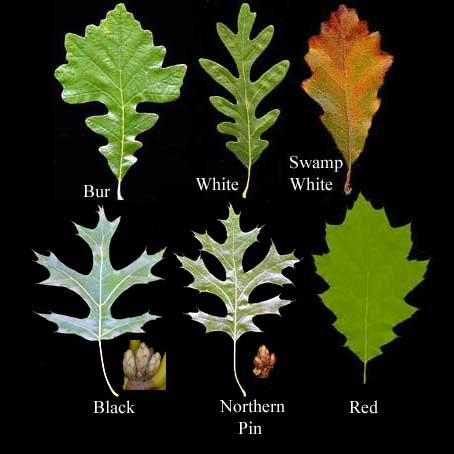From tiny acorns, majestic oaks will grow in Little Compton
Tree Committee offers seedlings to help bolster town's oak tree legacy
Little Compton is a special place that has been shaped by the efforts of countless people who have cared for and enhanced its natural beauty. Our …
This item is available in full to subscribers.
Please log in to continue |
Register to post eventsIf you'd like to post an event to our calendar, you can create a free account by clicking here. Note that free accounts do not have access to our subscriber-only content. |
Day pass subscribers
Are you a day pass subscriber who needs to log in? Click here to continue.
From tiny acorns, majestic oaks will grow in Little Compton
Tree Committee offers seedlings to help bolster town's oak tree legacy
Little Compton is a special place that has been shaped by the efforts of countless people who have cared for and enhanced its natural beauty. Our coastal maritime climate enables a longer growing season than the rest of New England, and milder winters enable plants to flower here that would not be as hardy farther inland. The town’s native forest of oak and holly trees is rare and grows only in coastal areas.
In 1979, the town approved the formation of a committee to promote and preserve the health of specimen trees worthy of growing and protection. The Little Compton Tree Committee is made up of a dedicated group of residents who work with town officials and private property owners to plant and maintain trees for the town’s benefit. The group also conducts an inventory of existing trees along the town’s roadways and identifies weak or dying trees for removal.
One of the most recent trees the group has installed is a new tulip poplar planted at the Adamsville ball field in memory of Hope Taylor, who led the committee for many years and passed away this year. Friends of Hope made gifts in her memory that will help to fund a legacy of trees that will live for decades to come. At the Commons, the committee’s newest member has worked to restore American elm trees, once a distinctive feature of every New England town landscape.
The committee also makes gifts of trees at no cost to private property owners who are willing to maintain them on their property. Once the committee receives requests for trees, the group works with recipients on the installation, and shows the new tree owner how to care for the tree over time.
To help landowners replace oak trees lost to moth damage three years ago, the committee is beginning to offer small seedlings grown from acorns selected from healthy mature specimens at Harvard University's Arnold Arboretum, in Boston, and from Wilmington, Delaware. As climate change brings warmer temperatures to our region, trees grown in Little Compton from seed gathered in the Mid-Atlantic coast may prove to be well-adapted to thrive in our evolving climate in the future.
Two ecologists from Delaware, Rick Darke and Doug Tallamy, gave a local talk in 2017 that was sponsored by the Sogkonate Garden Club. They encouraged the use of native plants – species that grow naturally in a given region – to support the biodiversity that is necessary for a healthy and thriving ecosystem, including beneficial habitats for birds, pollinating insects and other wildlife.
Of all the species of trees native to Little Compton, white oaks host more beneficial biodiversity than any other. Once plentiful locally, the best white oak specimens were harvested for the shipbuilding trade in the days of whaling, and then for lumber after kerosene displaced whale oil. White oaks are easy to distinguish from the more numerous Northern Red Oak by the rounded lobes (the “fingers”) on their leaves. Red oak species, by contrast, have points at the tips of their leaves.
Another hardwood tree that is native to the oak forest is the hickory, which produces a straight trunk that can exceed 80 feet at maturity and foliage that turns bright yellow in autumn. Hickory nuts are edible and are used in baking and yield a rich and tasty oil. The tree committee is attempting to propagate oaks and two hickory species from seed: Shagbark and Shellbark. Hickory nuts take longer to germinate than acorns. Very small seedlings will be offered when they become available.
Nut bearing trees such as oaks and hickories send down deep taproots, making them difficult to transplant. The best way to grow them on your property is to gather seeds as soon as they drop in the fall and plant them right away, two to three inches deep in sun-filled soil. Protect nuts in the ground from critters with a cylinder of wire “hardware cloth” or an aluminum screen from an old door or window. Once the trees sprout, they can be protected from browsing deer with the wire cylinder or a taller, plastic tree tube that can be removed when the tree outgrows it. Tree tubes are sold online, and the committee is looking into sourcing them for residents who want just one or two.
During a drought, the most important thing young trees need is water. One, long, slow deep soak per week encourages healthy root development better than short, shallow watering that barely penetrates the surface of the soil. A mulch of compost kept three inches away from the trunk of the tree will preserve moisture in the soil. (Never pile mulch “volcanoes” at the base of trees.) Once established, native tree species will be hardier and better adapted to host pollinators and birds than non-native species.
Little Compton Tree Committee
P.O. box 572, Little Compton
Julie McGeoch Co-Chair (mcgeoch@fas.harvard.edu – to request Tree Seedlings)
Sue Theriault Co-chair
Jeremy Allen
Jason Burchard, Town Tree Warden
Chris Faria
Paul Golembeske
Lease Plimpton
Lewis Taylor
Carter Wilkie
Helen Woodhouse











